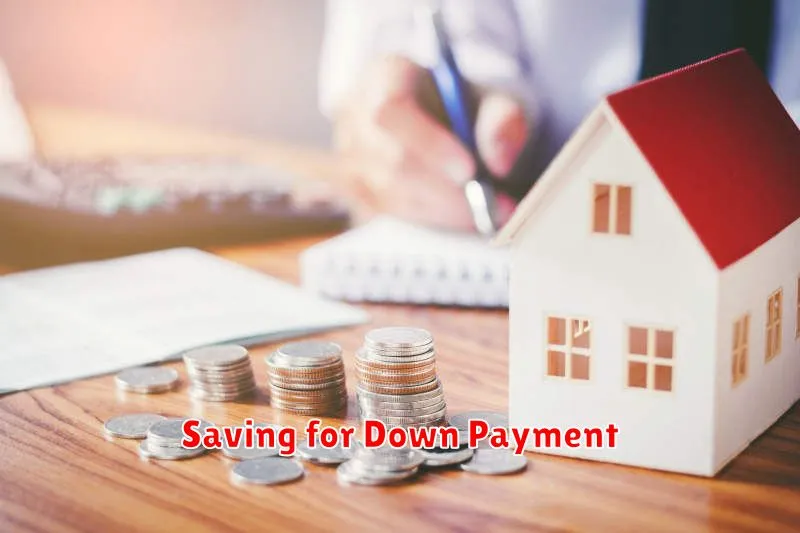Buying a home is a significant financial milestone, and saving for a down payment is often the first hurdle. It can seem daunting, but with a strategic plan and discipline, you can achieve this goal. This article will guide you through practical steps to save for a down payment on a house, from setting realistic goals to exploring different saving strategies. Whether you are a first-time buyer or looking to upgrade, this guide will empower you to take control of your financial future and turn your dream of homeownership into a reality.
Saving for a down payment requires dedication and consistent effort. It’s not just about putting money aside; it’s about making smart choices and maximizing your savings potential. From budgeting effectively to exploring investment options, this article will provide you with actionable advice and tips. Get ready to embark on a journey toward financial stability and the satisfaction of owning your own home.
Determining Your Down Payment Goal
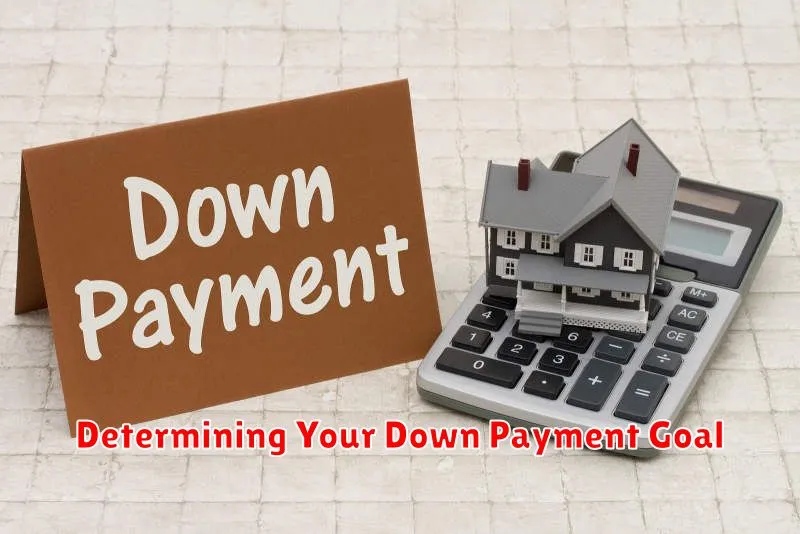
Before you start saving, you need to determine how much you’ll need for a down payment. This will depend on the price of the house you want to buy and the type of mortgage you’re getting.
In general, a 20% down payment is ideal, as it helps you avoid private mortgage insurance (PMI). PMI is an extra cost added to your mortgage payments if you put down less than 20%, designed to protect the lender if you default on your loan. However, there are several programs available that offer lower down payment options, such as the FHA loan program.
Here are some things to consider when determining your down payment goal:
- Your budget: How much can you comfortably afford to save each month?
- Your time frame: How long do you have to save before you want to buy a house?
- The current interest rates: Are they favorable for you to borrow money?
- The housing market in your area: What are the typical home prices in your area?
Once you’ve considered all of these factors, you can set a realistic down payment goal for yourself. If you need help calculating your down payment needs, consider consulting with a financial advisor.
Creating a Realistic Savings Plan
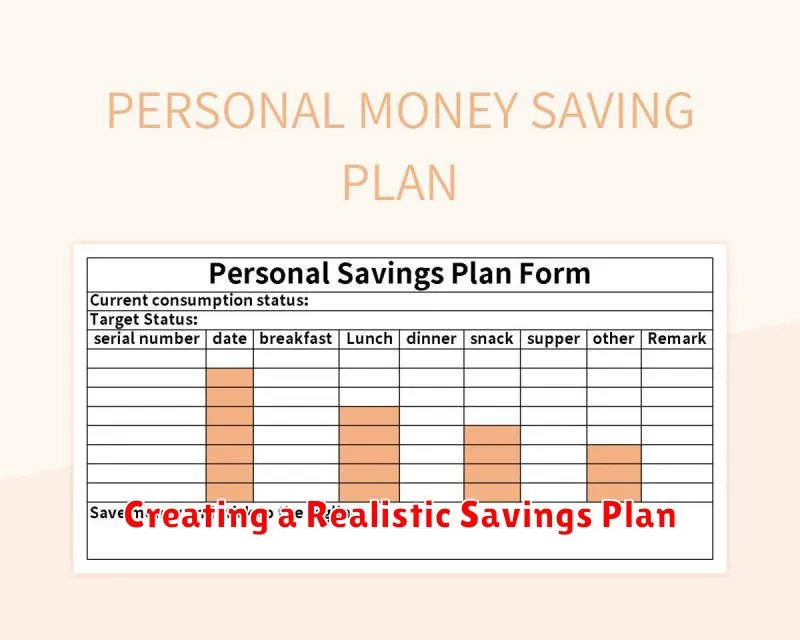
The first step in saving for a down payment is to create a realistic savings plan. This means figuring out how much you can afford to save each month and sticking to it. You’ll also need to factor in any unexpected expenses that may come up along the way.
A good starting point is to figure out how much you spend each month. You can use a budgeting app or spreadsheet to track your spending. Once you know how much you’re spending, you can start looking for ways to cut back.
There are a few things you can do to save more money each month:
- Cut back on unnecessary expenses, such as eating out or buying coffee.
- Find ways to save on your monthly bills, such as negotiating a lower rate on your cell phone plan or switching to a cheaper internet provider.
- Look for ways to earn extra income, such as taking on a side hustle or selling unwanted items.
Once you’ve figured out how much you can save each month, you can start setting financial goals. This will help you stay motivated and on track. For example, you could set a goal to save $1,000 per month for your down payment. You can also break down your goals into smaller, more manageable steps. For example, you could set a goal to save $100 per week.
It’s important to be realistic about your savings goals. Don’t set a goal that’s too ambitious, as this could make it more difficult to stick to your plan. It’s also important to remember that saving for a down payment takes time. Don’t expect to be able to save enough money in a short period of time. Just be patient and consistent with your savings, and you’ll eventually reach your goal.
Setting a Budget and Reducing Unnecessary Expenses
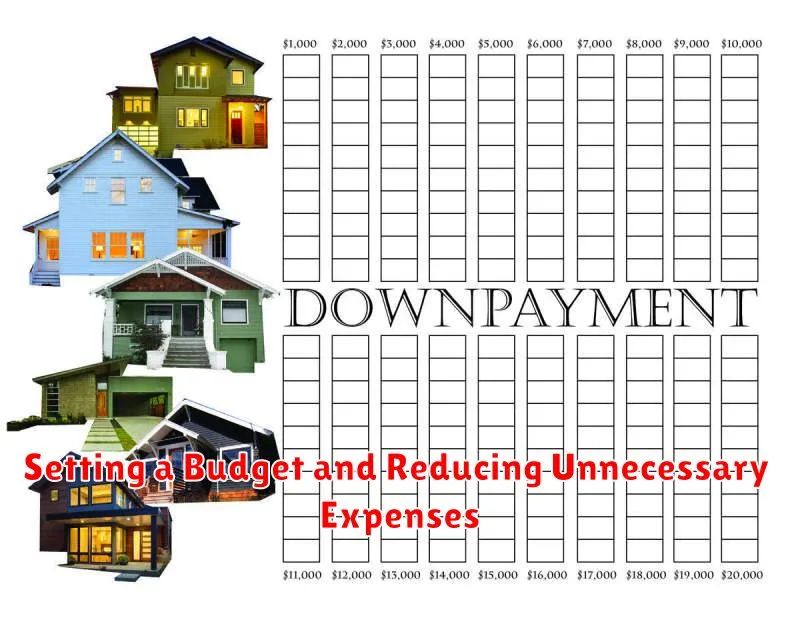
Saving for a down payment on a house requires a strategic approach. One crucial step is creating a budget and identifying areas where you can reduce unnecessary expenses. This will help you allocate more funds towards your homeownership goal.
Start by tracking your income and expenses. Use budgeting apps or spreadsheets to get a clear picture of where your money is going each month. Once you have this information, identify non-essential expenses that you can cut back on.
These could include things like:
- Dining out frequently
- Subscription services you don’t use
- Unnecessary entertainment expenses
- Luxury items
Once you’ve identified areas to cut back, consider negotiating lower rates on bills like utilities and phone services. You can also explore ways to reduce your monthly housing expenses, such as moving to a smaller apartment or sharing a place with roommates.
By meticulously tracking your expenses and making conscious choices about your spending, you can free up significant funds to contribute towards your down payment goal. Remember, every little bit counts when it comes to saving for a house.
Exploring Down Payment Assistance Programs
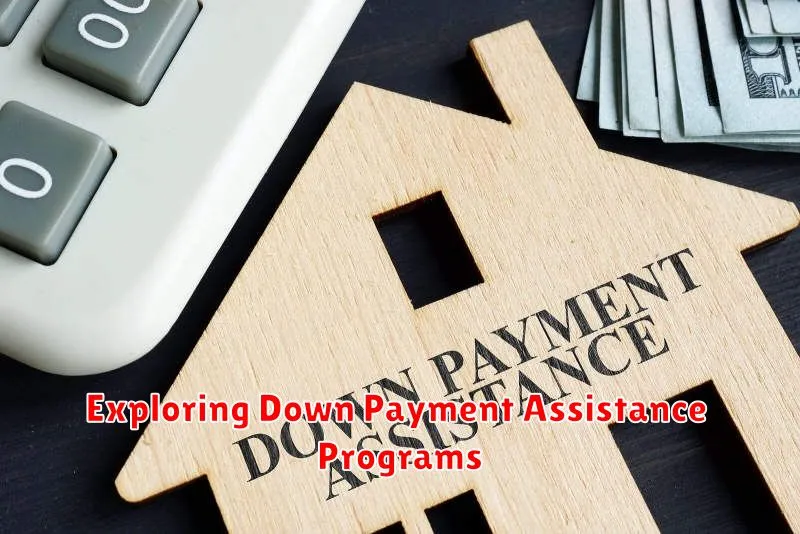
Saving for a down payment on a house can be a daunting task, but it doesn’t have to be an insurmountable hurdle. Many programs exist specifically to help individuals and families achieve homeownership by offering down payment assistance (DPA). These programs can provide grants, loans, or even subsidies to reduce the amount of money you need to put down on a home.
Types of Down Payment Assistance Programs:
- State and Local Programs: Many states and local governments offer DPA programs targeted towards residents. These programs often have specific eligibility requirements and income limits.
- Federal Programs: The Federal Housing Administration (FHA) offers programs like the FHA First Time Homebuyer Program, which allows for lower down payments (as low as 3.5%). The U.S. Department of Agriculture (USDA) offers programs for rural areas with no down payment required.
- Employer-Sponsored Programs: Some employers offer down payment assistance programs as part of their benefits packages. These programs are typically restricted to employees of the company.
- Nonprofit Organizations: Several nonprofit organizations offer DPA programs, often focused on specific groups such as veterans, first responders, or low-income families.
Finding and Applying for Down Payment Assistance:
To find DPA programs in your area, contact your local housing authority, real estate agent, or financial advisor. You can also search online databases such as the National Housing Search website or HUD’s website.
When applying for DPA, be prepared to provide detailed information about your finances, employment history, and the property you plan to purchase. Most programs have strict eligibility requirements, so it’s important to thoroughly understand the program guidelines before applying.
While down payment assistance programs can be a valuable resource, it’s essential to remember that they typically come with their own set of terms and conditions. Be sure to carefully read and understand the program guidelines before committing.
Opening a High-Yield Savings Account
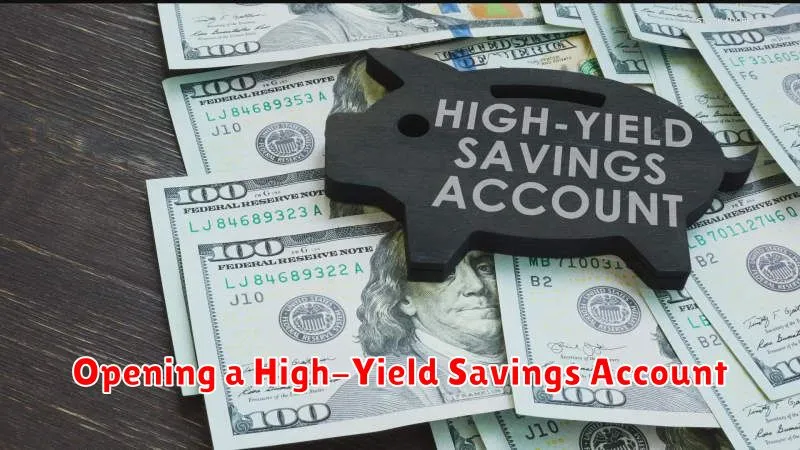
A high-yield savings account is a great way to save for a down payment on a house. These accounts typically offer higher interest rates than traditional savings accounts, which means your money will grow faster. This can be a significant advantage when you’re trying to save a large sum of money.
To open a high-yield savings account, you’ll need to shop around and compare rates from different banks and credit unions. You can use online tools to help you find the best rates, or you can contact banks and credit unions directly. Once you’ve found an account that you like, you can open it online or in person.
When choosing a high-yield savings account, it’s important to consider the following factors:
- Interest rate: The higher the interest rate, the more money you’ll earn on your savings.
- Fees: Some banks and credit unions charge monthly fees for high-yield savings accounts. Make sure to factor in these fees when comparing rates.
- Minimum deposit: Some accounts have a minimum deposit requirement. Make sure you can meet this requirement before opening an account.
- Accessibility: How easy is it to access your money? Can you make withdrawals online, by phone, or in person?
Once you’ve opened a high-yield savings account, you can start making regular deposits. The more you save, the faster you’ll reach your goal of buying a house. You can also consider using a budgeting app to help you track your spending and ensure that you’re putting enough money away for your down payment.
Investing for Your Down Payment
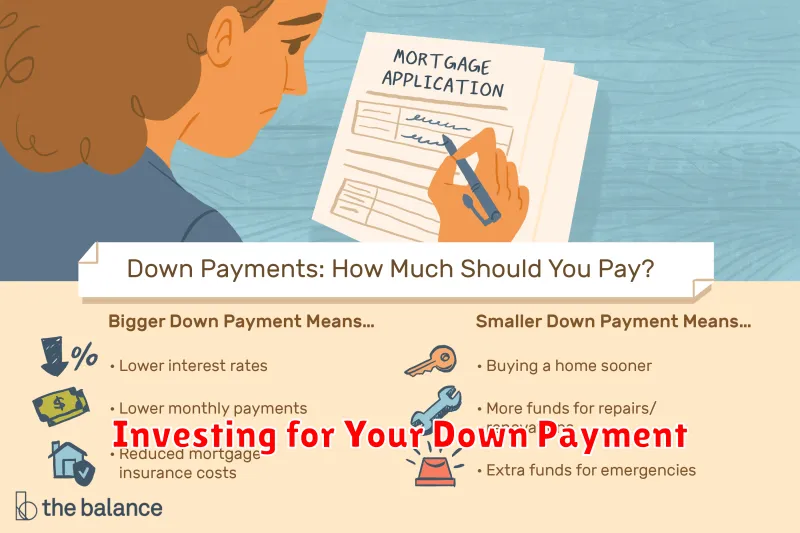
Investing for your down payment can be a smart strategy to accelerate your homeownership goals. While it’s crucial to prioritize saving, consider exploring investment options to potentially boost your savings. Remember, investing involves risk, and you should only invest what you can afford to lose.
Here are a few popular investment avenues to consider:
- High-yield savings accounts (HYSA): HYSAs offer higher interest rates than traditional savings accounts, allowing your money to grow steadily. While returns might be modest, they provide a secure and accessible option for short-term savings.
- Certificates of Deposit (CDs): CDs offer fixed interest rates for a specific period, typically ranging from a few months to several years. They can be a good choice if you have a set savings timeline and want to avoid market fluctuations.
- Index Funds or ETFs: Investing in index funds or exchange-traded funds (ETFs) allows you to diversify your investments across a broad market segment. They track a specific market index, providing a low-cost and potentially higher-growth option for long-term savings.
- Real Estate Investment Trusts (REITs): REITs offer exposure to the real estate market without directly owning property. They are traded on stock exchanges and can provide dividends and potential growth opportunities.
Before investing, it’s crucial to:
- Consult with a financial advisor: They can provide personalized guidance and help you create a suitable investment plan.
- Understand your risk tolerance: Determine how much risk you’re comfortable taking with your investments.
- Research different investment options: Compare returns, fees, and risks before making any decisions.
Remember, investing is a long-term strategy, and patience is key. Your investments may experience fluctuations, but over time, they can potentially contribute significantly to your down payment savings.
Finding Ways to Increase Your Income

Saving for a down payment on a house can feel like a daunting task, but it’s a goal achievable with a well-structured plan. One crucial element of that plan is finding ways to increase your income. Having more money coming in can significantly accelerate your savings journey. There are several avenues to explore, from taking on extra work to developing new skills that command higher pay.
Consider these possibilities:
- Part-time or freelance work: Explore online platforms or local businesses that offer opportunities to earn extra income in your spare time. You could freelance in your field, offer tutoring services, or take on tasks like virtual assisting.
- Side hustles: Turn your hobbies or passions into income-generating activities. Do you enjoy baking? Sell your creations at local markets or online. Are you good at DIY projects? Offer your skills on platforms that connect people needing home repairs.
- Overtime or extra shifts: If your current job allows it, consider working extra hours or taking on additional shifts to increase your earnings.
- Negotiate a raise: Research the market value for your position and skills. If you feel you’re underpaid, prepare a compelling case and politely request a salary increase.
- Upskill or retrain: Invest in your professional development. Taking online courses or attending workshops can help you acquire valuable skills that may lead to higher-paying jobs or promotions.
Remember, increasing your income takes time and effort. It’s important to choose strategies that are realistic and sustainable. By taking action and exploring these options, you can significantly boost your savings for a down payment and get closer to your homeownership dream.
Maintaining Good Credit for Mortgage Approval
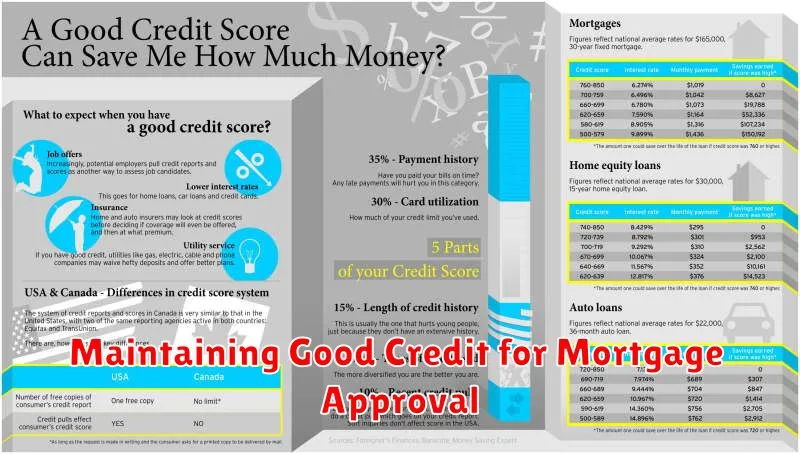
Before you start saving for a down payment, it’s important to focus on maintaining good credit. Lenders use your credit score to determine your creditworthiness and to set your interest rate. A good credit score can mean lower interest rates and monthly payments, saving you thousands over the life of your mortgage.
Here are a few tips to help you maintain good credit:
- Pay your bills on time: This is one of the most important factors in your credit score. Even a single late payment can have a negative impact. Set up reminders or use automatic payments to ensure your bills are paid on time.
- Keep your credit card balances low: The amount of debt you carry on your credit cards is another important factor in your credit score. Aim to keep your balances below 30% of your available credit limit. Try to pay more than the minimum payment each month to lower your balance quicker.
- Don’t open too many new credit accounts: When you apply for a new credit card or loan, it can have a temporary negative impact on your credit score. Only apply for credit when you need it and don’t apply for multiple accounts at once.
- Avoid closing old credit accounts: If you have credit cards or loans with a long history, try not to close them, even if you don’t use them anymore. Closing old accounts can shorten your credit history, which can lower your credit score.
- Check your credit report regularly: You can get a free copy of your credit report from each of the three major credit bureaus (Equifax, Experian, and TransUnion) once a year at AnnualCreditReport.com. Checking your credit report regularly can help you spot any errors that could be affecting your score.
By following these tips, you can maintain good credit, which will increase your chances of getting approved for a mortgage and securing a lower interest rate. Remember, building good credit takes time and effort, so start working on it today.
Staying Motivated and Reaching Your Down Payment Goal
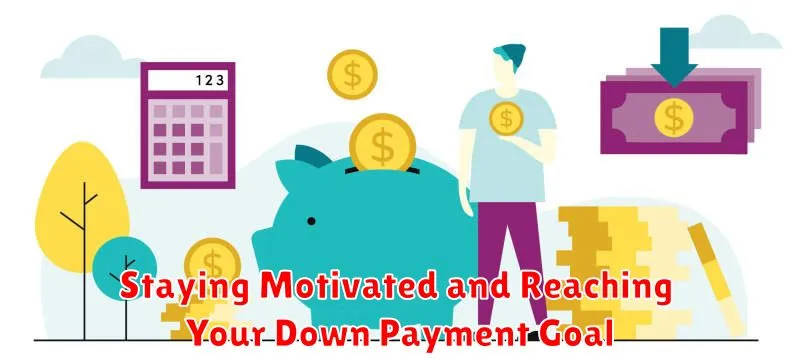
Saving for a down payment can be a long and challenging journey. It requires discipline, sacrifice, and a healthy dose of motivation. Here are some tips to stay motivated and on track:
Visualize Your Goal: Create a vision board or a physical representation of your dream home. This will serve as a constant reminder of what you’re working towards. Seeing your goal in front of you can be a powerful motivator.
Set Realistic Goals: Break down your large goal into smaller, achievable milestones. Celebrate each milestone as you achieve them. This will keep you feeling motivated and show you tangible progress.
Track Your Progress: Regularly monitor your savings progress. Use a spreadsheet, budgeting app, or even a simple notebook to keep track of your contributions and track your progress towards your goal.
Find an Accountability Partner: Share your savings goals with a friend, family member, or financial advisor. Having someone to talk to and check in with can help you stay accountable and motivated.
Reward Yourself: When you reach a savings milestone, reward yourself with something you enjoy, but stay within your budget. This positive reinforcement can help you stay motivated and on track.
Remember Your Why: Throughout the process, remind yourself of the reasons you’re saving for a home. Whether it’s more space for your family, a more stable living situation, or simply achieving a personal financial goal, keep your motivation strong.
Saving for a down payment is a significant financial commitment. It requires dedication and a commitment to your goal. By staying motivated and taking steps to reach your goal, you’ll be closer to achieving the dream of owning your own home.

